How to Balance the Scales: Inequalities with Addition and Subtraction of Mixed Numbers
Mixed numbers, which consist of a whole number and a fraction, often appear in real-world scenarios.
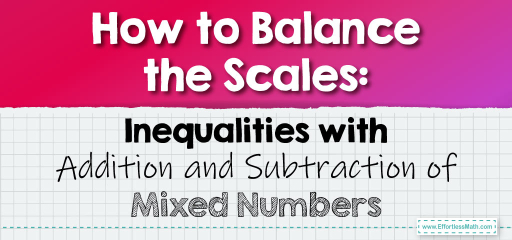
When dealing with inequalities involving mixed numbers, understanding the impact of addition and subtraction is essential. In this guide, we’ll explore the intricacies of inequalities when adding or subtracting mixed numbers.
Step-by-step Guide:
1. Basics of Inequalities:
Inequalities use symbols like \(<\) (less than), \(>\) (greater than), \(\leq\) (less than or equal to), and \(\geq\) (greater than or equal to) to compare two values.
2. Understanding Mixed Numbers:
A mixed number is a combination of a whole number and a fraction. For instance, \(2 \frac{1}{3}\) is a mixed number.
3. Impact of Addition on Inequalities:
When you add the same mixed number to both sides of an inequality, the relationship between the two sides remains unchanged.
Example: If \(a > b\), then \(a + c > b + c\) for any mixed number \(c\).
4. Impact of Subtraction on Inequalities:
Similarly, when you subtract the same mixed number from both sides of an inequality, the relationship remains unchanged.
Example: If \(a < b\), then \(a – c < b – c\) for any mixed number \(c\).
5. Working with Mixed Numbers:
When adding or subtracting mixed numbers in inequalities:
– First, perform the operation on the whole numbers.
– Then, perform the operation on the fractions. If necessary, find a common denominator for the fractions.
Example 1:
Given \( 3 \frac{1}{4} < 4 \frac{1}{2} \), what happens when we add \(1 \frac{3}{4}\) to both sides?
Solution:
Adding \(1 \frac{3}{4}\) to both sides:
\[ 3 \frac{1}{4} + 1 \frac{3}{4} < 4 \frac{1}{2} + 1 \frac{3}{4} \]
\[ 5 < 6 \frac{1}{4} \]
The Absolute Best Book for 5th Grade Students
Example 2:
Given \( 5 \frac{2}{3} > 4 \frac{1}{3} \), what is the result when we subtract \(2 \frac{1}{3}\) from both sides?
Solution:
Subtracting \(2 \frac{1}{3}\) from both sides:
\[ 5 \frac{2}{3} – 2 \frac{1}{3} > 4 \frac{1}{3} – 2 \frac{1}{3} \]
\[ 3 \frac{1}{3} > 2 \]
Practice Questions:
1. If \( 4 \frac{3}{5} > 3 \frac{2}{5} \), what is the inequality after adding \(2 \frac{1}{5}\) to both sides?
2. Given \( 6 \frac{4}{7} < 7 \frac{3}{7} \), what happens when we subtract \(3 \frac{2}{7}\) from both sides?
3. If \( 8 \frac{1}{8} > 7 \frac{3}{8} \), what is the result when we add \(1 \frac{2}{8}\) to both sides?
A Perfect Book for Grade 5 Math Word Problems!

Answers:
1. \( 6 \frac{4}{5} > 5 \frac{3}{5} \)
2. \( 3 \frac{2}{7} < 4 \frac{1}{7} \)
3. \( 9 \frac{3}{8} > 8 \frac{5}{8} \)
The Best Math Books for Elementary Students
Related to This Article
More math articles
- The Best TASC Math Worksheets: FREE & Printable
- Incorporating Technology in Math Education: Tools and Techniques for Modern Teachers
- Number Properties Puzzle – Challenge 7
- How to Apply a Mathematical Approach to Essay Writing
- What is the Side Splitter Theorem? A Complete Introduction and Exploration
- FTCE Math FREE Sample Practice Questions
- Top 10 Tips to Create the TExES Core Subjects Math Study Plan
- Decimal Dynamics: How to Evaluating Numerical Expressions with Decimals
- How to Use Number Lines to Add and Subtract Fractions with Like Denominators
- How to Write Equations of Horizontal and Vertical Lines
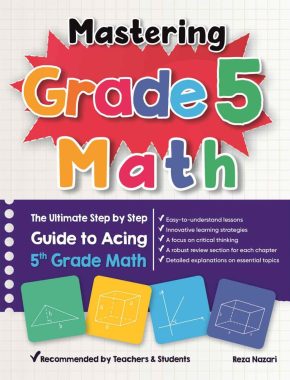

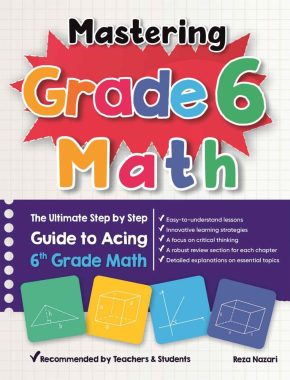
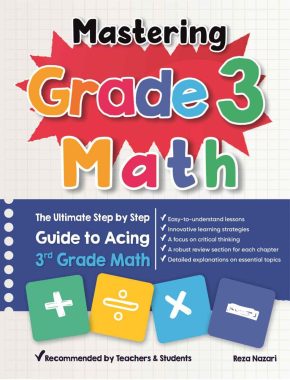
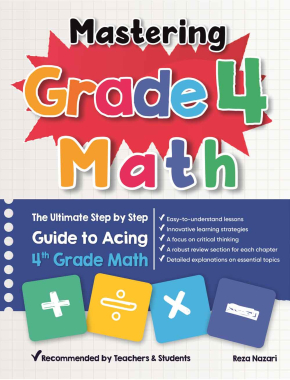



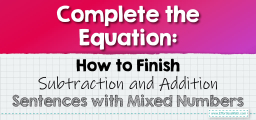









What people say about "How to Balance the Scales: Inequalities with Addition and Subtraction of Mixed Numbers - Effortless Math: We Help Students Learn to LOVE Mathematics"?
No one replied yet.